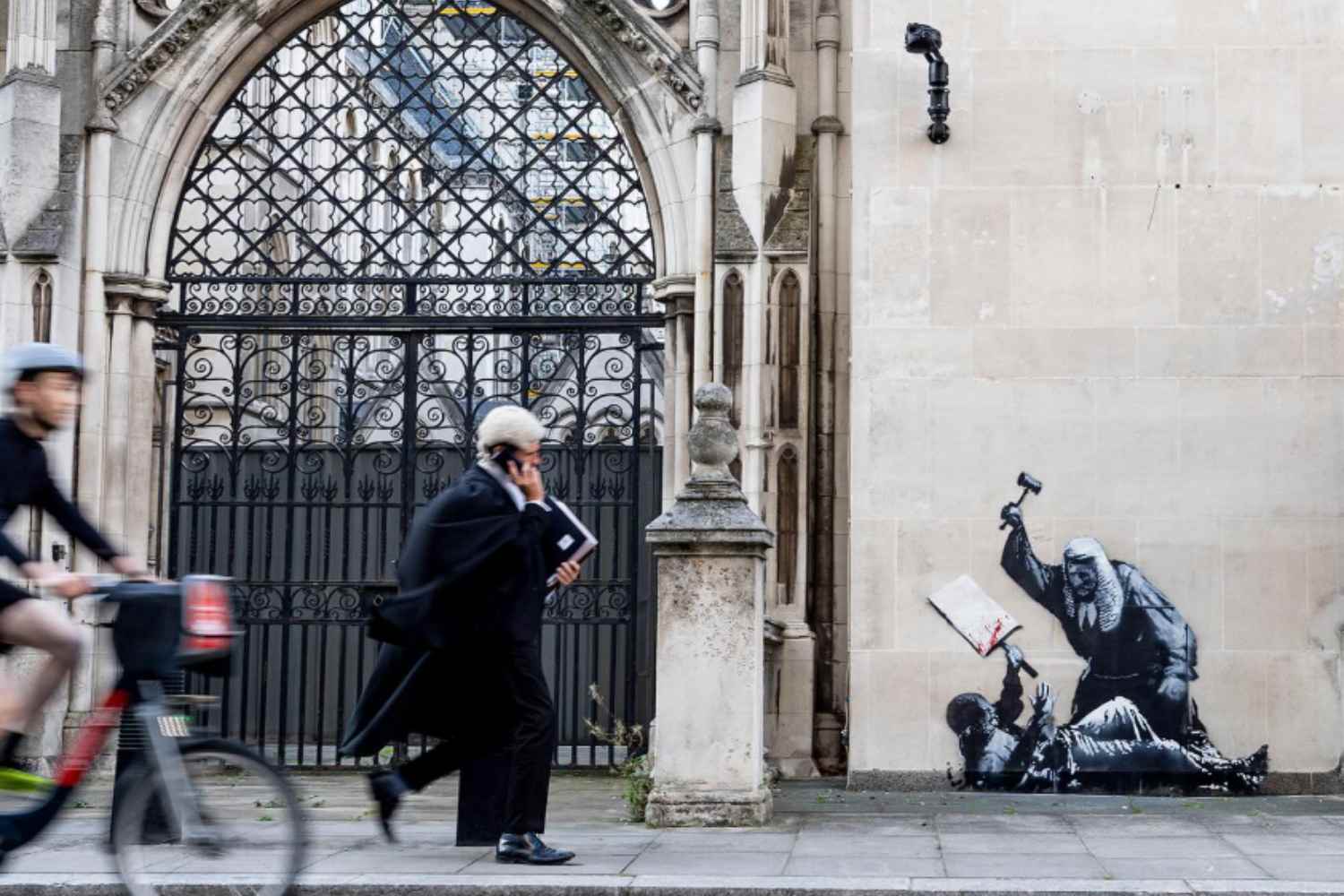Banksy’s latest mural on London’s Royal Courts of Justice depicts a judge striking a protester, a bold reflection on repression amid mass arrests and the ban on Palestine Action.

@banksy/Instagram
A new Banksy mural has appeared on the wall of London’s Royal Courts of Justice, the iconic building that embodies the authority of the British legal system. The image is stark: a judge in traditional wig and black robe striking down a protester on the ground, with splashes of blood across the placard the activist once held. As often happens with the Bristol-born artist, the work immediately ignited political and social debate.
Timing that speaks louder than coincidence
The mural appeared just two days after more than 900 arrests in London during a demonstration in support of Palestine Action. The group, founded in the UK in 2020, campaigns against the war in Gaza and was recently banned by the British government under anti-terrorism laws. The timing of Banksy’s intervention feels deliberate, as though the wall itself were offering commentary on the escalating clash between dissent and authority.
Quickly covered, but impossible to silence
Despite the uproar it caused, the mural was swiftly shrouded in black tarps, fenced off with metal barriers, and guarded by private security under the gaze of a surveillance camera. Unsurprisingly, this only amplified its resonance. Social media carried the image within hours, and Banksy’s official account later confirmed the work.
Authorities’ swift response mirrors the fate of many of Banksy’s London pieces, often erased or hidden within hours. Just last year, his series of animal-themed works briefly spread across the capital before meeting a similar fate.
When art collides with protest and repression
The broader backdrop is impossible to ignore. With Palestine Action’s designation as a terrorist organization, even public support for the group now risks up to 14 years in prison. Critics argue that the government is increasingly wielding anti-terror laws against peaceful protest movements, eroding fundamental rights in the process.
During the most recent demonstration, hundreds of people staged a sit-in at Parliament Square, holding signs that read: “I oppose genocide, I support Palestine Action.” Within minutes, police moved in, carrying out mass arrests—the largest number of detentions in a single day in London in over a decade.
Against this charged landscape, Banksy’s mural—showing a judge literally bringing down the law on a protester’s body—feels almost inevitable. It is not just an indictment of judicial power but a symbol of the collision between art, dissent, and freedom of expression at the very heart of Britain’s capital.
